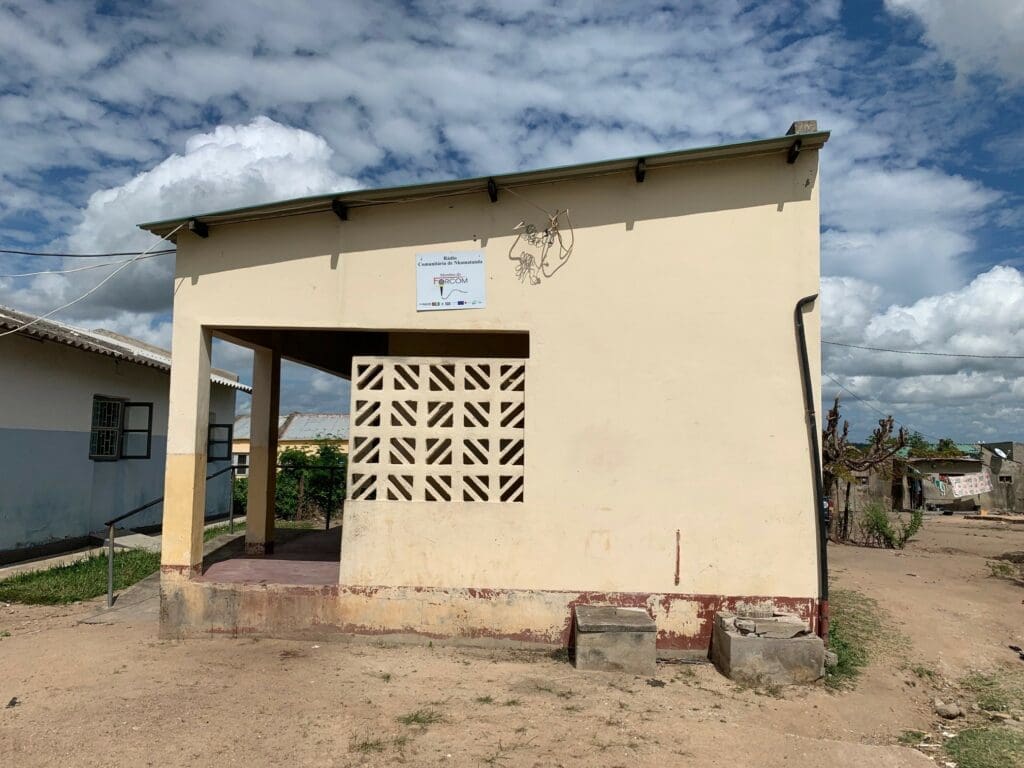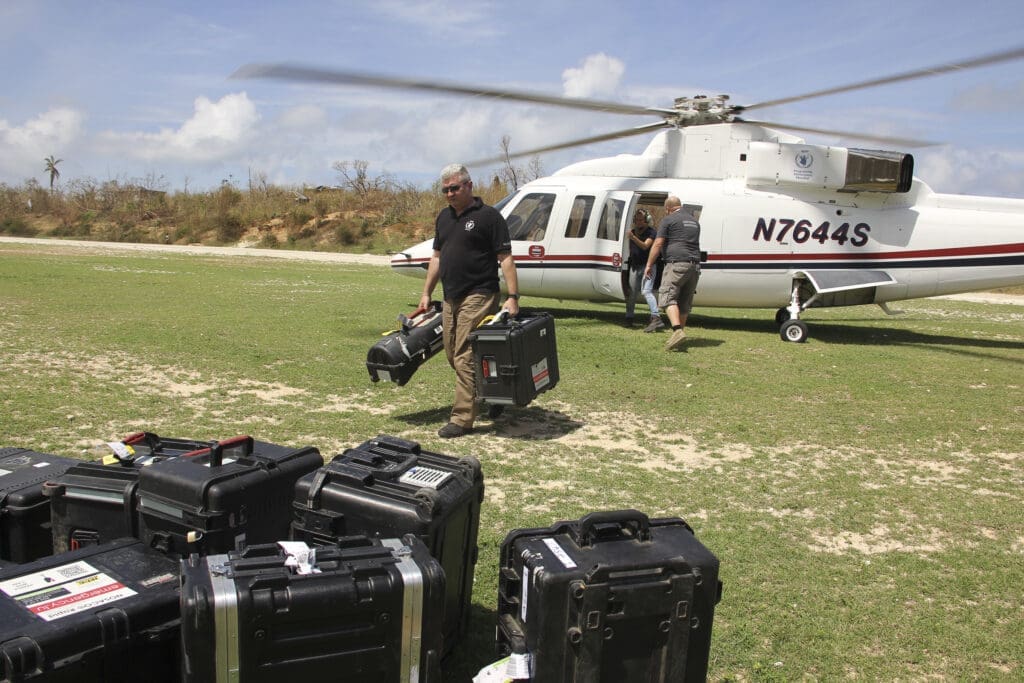Small Radio Stations Saved Lives Before Cylone Idai Wiped Them Out. See What They’re Doing Now.

February 13th marks World Radio Day! It’s a celebration of radio’s important place in humanity’s history. As the world changes, so does radio. During the Covid-19 pandemic, radio made it possible, for example, to ensure continuity of learning, to fight against misinformation, and to promote barrier gestures. We’re honoring the role radio plays today by looking back at this story from Mozambique about the power of a few little stations to save lives.
A baby born in a mango tree. A fisherman who swam through the floods. A hopeful sister looking for her brothers. A young mother left a widow at the age of 23. Another mother who gripped her children, entangled in branches as water engulfed them. Two children buried alive under the house they lived in.
These are just fragments — raw and jagged — of extraordinary stories that have been woven into the fabric of Mozambique’s history. It’s been more than a year since Cyclone Idai unleashed its fury on them, and many of the people who survived did so because of warnings and advice broadcast on community radio stations.

Cyclone Idai in Mozambique destroyed thousands of homes and drowned vast swaths of farmland.
Now, the Emergency Telecommunications Cluster (ETC) — a global network of humanitarian, government and private sector organizations led by the United Nations World Food Programme (WFP) — has rehabilitated six radio stations. They’re back on the air, and stronger than ever.
Nine months ago, community radios in Sofala province, including Beira, Dondo, Aguia, Buzi and Nhamatanda all received warnings the day before the cyclone made landfall — some from local government authorities, some from friends at a local sugar company. Warnings were broadcast every hour for 36 hours with presenters advising people on how to prepare for the disaster and protect themselves and their families in the limited time they had.
‘Keep food stocks dry.’ ‘Put documents in plastic bags and keep safe.’ ‘Move to higher ground.’ ‘Keep your whole family together.’ Stay away from trees and cables.’ ‘Secure the roof.’ ‘Remain indoors.’ ‘Keep your phones charged and dry.’

Radio Nhamatanda – one of the community radio stations that broadcast life-saving messages – was housed in this small building.
Crucially, people listened and acted accordingly. Sitting in his tiny office in humid Nhamatanda, the president of the municipal council spoke quietly about the importance of communication: “The radio was very important. Whoever had a radio listened to it and the warnings saved lives, and many of them.”
These radio stations, often housed in tiny, unassuming buildings, continued to broadcast warning messages until the power was cut and everything went black. One Radio Nhamatanda presenter, Rodrigues, risked his life to save the valuable equipment as he knew communication would be vital in the days and weeks that followed. He unplugged what he could and slept out the storm on the floor of the studio. His own home — built in the traditional Mozambican way with mud and bricks and thatched with grass — was destroyed that night.

Rodrigues, a presenter at Radio Nhamatanda, risked his life to save vital radio equipment.
Community radio remained a vital tool in the immediate aftermath of the cyclone, too, as people sought and shared information. Sometimes the news was miraculous: one desperate caller searching for her husband — who had half-swum, half-floated for hours through the floods — was reunited with him. More often the news was heartbreaking: A young woman walked five miles to her family home in Lamego as there were no mobile phones and no radio. She found two children had been crushed under the collapse of their own house. Another’s husband was swept into the swelling Pungue river as she sheltered her two young children with her body.
“We heard warnings to leave the river [where I lived] and I heard a rushing noise but thought it was the wind,” said one woman, who is now entirely alone.
Having been moved to a temporary camp along the dusty main road in Nhamatanda, they waited for news of loved ones and to hear when, if ever, they could go home – or at least to the place where their home once was. Through the air, a TV show could be heard; the owner of a house on the edge of the camp had turned it up for everyone to hear. In the absence of radio, which was the center of community life — a fountain of news, entertainment and education — it brought some light relief.
Tuning back in
Today, more than 1.9 million listeners are able to tune into their favorite radio stations in Sofala province once again. In November, the WFP-led Emergency Telecommunications Cluster (ETC), together with the National Forum of Community Radios (Forum Nacional de Rádios Comunitárias — FORCOM) completed the rehabilitation of six stations with new communications towers, transmitters, speakers and microphones. What has happened over the last eight months cannot be erased, but people can be better prepared for the next disaster by having access to information. And this is where community radios are a very literal lifeline.

ETC officer Karen Barsamian offloads communications equipment from a WFP-chartered helicopter at Jeremie airstrip in Haiti after Hurricane Matthew struck in October 2016.
Standing in the rubble of what once was Radio Nhamatanda a few weeks after Cyclone Idai struck, one presenter explained how — in the absence of any public counselling or mental health services — he tried to help people through the airwaves:
“I tell them: have hope, do something, don’t give up, let’s rebuild and move forward.”
Nine months on in this small corner of Mozambique, the community is doing just that.
Visit our Mozambique hub to see the full extent of Cyclone Idai’s impact and the UN World Food Programme’s work in the area.
This story was written by Suzanne Fenton and originally appeared on WFP’s Insights.




